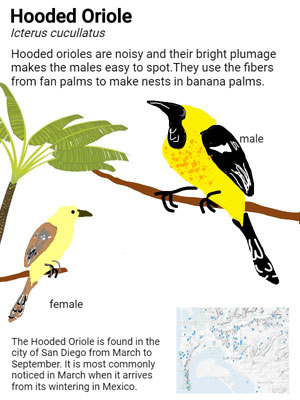
Mobilize students to make learning matter

Up until the late 20th century, standards for air and water quality didn't exist. So in 1970, Gaylord Nelson, a former Senator and Governor of Wisconsin, started calling for college campus "teach-ins" on the environment. He brought on Denis Hayes, a 25-year old former President of the Stanford student body, to help organize.
Denis chose April 22nd for the first Earth Day because it was equidistant from spring break and finals, so more students would be able to participate. Since the first "teach-in" in 1970, Earth Day has grown into a billion person, world wide phenomenon designed to mobilize people into action to protect the planet on April 22 and every day of the year.
In this spirit of student-led teach-ins, use these ten ideas to mobilize your students for truly active learning.
The burning of fossil fuels contributes to air pollution and climate change. While students don't drive, getting them to and from school, sporting events, and music lessons does consume gas.
The average car uses 1 gallon of gas to go 28 miles. If even half of the students enrolled in k-12 schools in the United States walked a half-mile to school instead of driving for one day, almost 1 million gallons of gas would be saved.
If your students live a safe walking or biking distance to school, encourage this as the mode of transportation for a day or week. Use a visual like a fund-raising thermometer to keep a running total of your site's saved gallons a day.
24 billion pounds of plastic end up in our oceans each year. Thousands of seabirds, turtles, and marine mammals die each year from getting tangled up in or ingesting this plastic.
If you live by the coast, join or start a coastal cleanup to remove plastic from your local beaches. If you live in an urban area, head to a local park with bags and gloves to pick up litter.
Older students could even identify, graph, and analyze the geographic, or GPS, location of litter in a park or local public space and share the data with local officials for additional or more effective trash can locations.
Earth's environments are all unique. Even the most populated urban environments have parks, gardens, and migratory animals.
Learn about the plant and animal species in your local area, focusing on ones that can be easily seen or identified.

Create and publish a print or digital field guide specific to these unique species and then lead a nature walk with family, friends, and neighbors to see if you can spot them.
Students are beginning to get used to buying reusable items like shopping bags and water bottles. But we live in a culture of consumption and most of these reusable items are purchased new.
Encourage students to explore the idea of reusing through a classroom swap. Choose a theme, like books or fidget toys, and have students bring in one they are willing to trade. Put them all on a table and draw names for first pick, or wrap them in used news print for a white elephant-style exchange.
If you have older students, explore the barter system by encouraging them to take in multiple books (or toys) and barter their way to the object, or objects, they want.
You might encourage students to swap clothes with a friend or come to school in a hand-me-down or thrifted item. Then have a fashion show to celebrate how great they look.
Tyree Guyton, a Detroit citizen, looked at the abandoned and vacant houses in his community and used found objects to heal his community. Use his Heidelberg Project to help students consider "art" as a verb.
Start simple with an upcycle project. Recycling is taking an item and using the materials in it again. Upcycling involves reusing an item in such a way that its value is increased. Students may have seen upcycling examples like wallets made from candy wrappers or rag rugs made from cast-off fabric scraps.
Instead of buying crafting materials, ask students to collect (and clean) interesting objects, like colorful plastic bottle caps, and leftover materials that would normally be thrown away. Place a white board or poster board near the collected materials for students to share ideas or use a digital idea mapping tool to share ideas, including digital pictures and links to videos and instructions.
Create an upcycle station or take an afternoon for upcycling fun. Have students trade, showcase, or even sell their creations at an upcycling fair.
Scientific observations and data collection cost money. Citizen science projects remove this financial obstacle by taking advantage of the power of curious and concerned citizens.
Citizen science projects vary widely, but there are usually ones that match what your students can observe where they live. For example, Zooniverse's SquirrelMapper requests citizen observations of the grey and black color morphs of the eastern gray squirrel to help answer why squirrels of different colors occur in very different patterns in different neighborhoods.
Many citizen science projects, like Celebrate Urban Birds from the Cornell Lab of Ornithology take advantage of apps like Merlin Bird ID for student devices. Projects like the EarthEcho Water Challenge offer kits for purchase that connect to science lesson plans.
The GLOBE Program is a great way to contribute weather data all year round and has projects like cloud observation that can be done anywhere. Like most citizen science programs, the GLOBE Project requires an account, but also offers training.
Connect students to plants with a garden project. If you have a school garden, have the students who run it give tours to other classes. You can also connect students to the Earth itself by asking them to design their own garden.
If you don't already have a school garden and have free space at school, work as a class or school to design a garden. While growing food to eat is always a great idea, you might also consider a garden to propagate the plants butterflies need, to showcase your local native plants, or to demonstrate how to make a garden that requires minimal water.
Gardens can occur in small spaces too, like a pot of herbs by a kitchen sink or a cherry tomato plant on a back porch. Task older students with creating small garden how-to's, such as social media-style videos that demonstrate how to construct a one-pot garden.
The US Department of Education started the Green Ribbon Schools program to highlight (and spread) great ideas for making schools more sustainable.
The idea is not to meet a prescriptive set of rules, but to work on improving schools in ways that matter to each site. Schools can achieve an award in many areas, including outdoor learning, green workforce development, climate mitigation, infrastructure, environmental justice, sustainable energy, and much more.
Put students in charge of choosing an area they think needs the most improvement at your site. While they can conduct print or online research, they should also collaborate with related staff at the district and in the community. For example, they can interview the maintenance crew about air filtration or cafeteria staff about food procurement.
After students identify a problem and state their goal, they need to reach out to all stakeholders and dig into budget, infrastructure, staffing, and resource allocation. Once this is complete, students can collaborate with teachers, parents, staff, administrators, and community members to both ideate and execute solutions.
This one is perhaps the easiest and closest to a traditional academic task — raise awareness. Choose an issue close to students' hearts, such as animals, or an issue in your community, such as clean water, air pollution, or sustainable energy.
Have students conduct research on the topic so they are able to:
Then, have students create media resources that inform others in their community about the issues and ways they can take action individually and collectively.
Students can create posters, stickers, and public service announcements to advertise the issue and share knowledge about the problem. They can also create research briefs, write letters to government officials, share opinion pieces in local newspapers, and design or invent physical solutions.
Finally, simply ask your students what issue they want to take action on. These ideas have been science-related in the spirit of Earth Day, but you can tap into student passions about food, poverty, litter, and so many other topics to ignite their idealism and give them essential skills practice in a meaningful way.
Problems are everywhere in our community and just about any community issue project requires research, writing, interviewing, public speaking, data collection, budgeting, and history. So what are you waiting for? There's no better way to engage learners, connect to standards, build social-emotional skills and put civics learning into action.

Follow us on Instagram for daily inspiration

Create a thought web, cluster, flowchart, or other graphic organizer for a lesson
Five ideas for creative classroom centers
Creative, digital book reviews
Fun and powerful ideas with animated characters

Wixie
Share your ideas, imagination, and understanding through writing, art, voice, and video.

Rubric Maker
Create custom rubrics for your classroom.

Pics4Learning
A curated, copyright-friendly image library that is safe and free for education.

Wriddle
Write, record, and illustrate a sentence.

Get creative classroom ideas delivered straight to your inbox once a month.
Topics